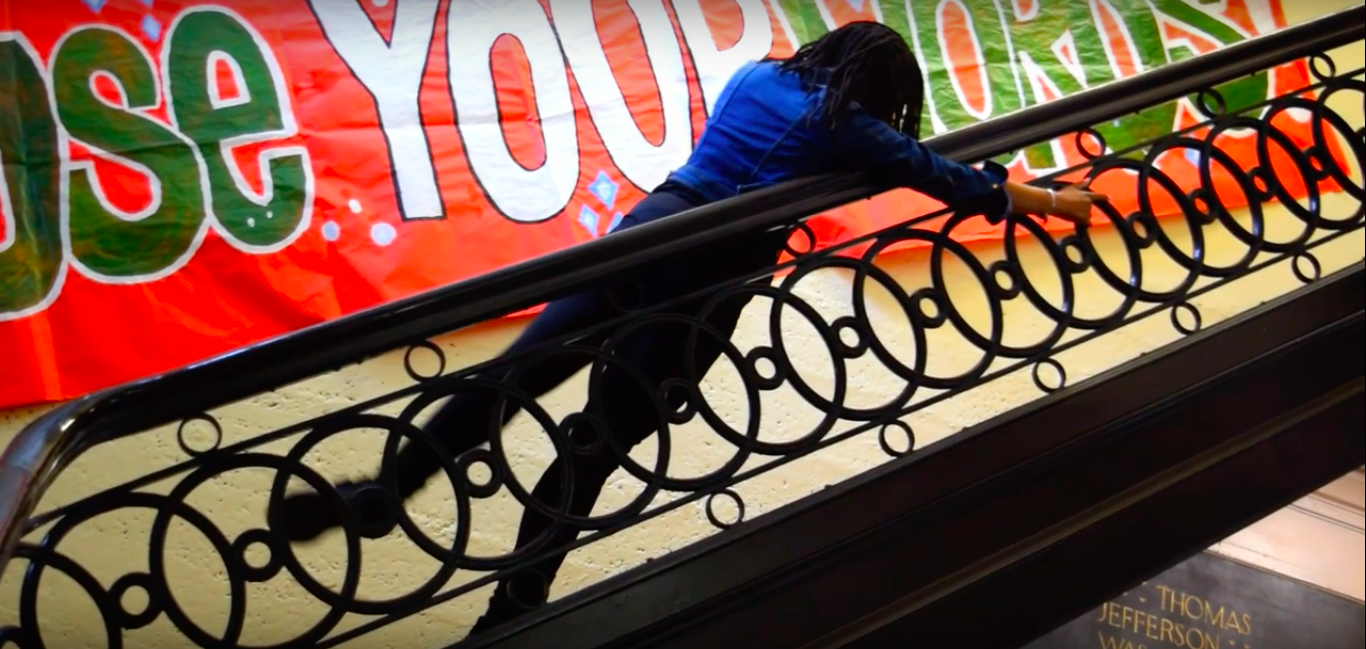This post is the first in a series cataloging and responding to interviews I’m having with people across Chicago (artists, non artists, art enthusiasts, art un-enthusiasts) about their experiences and perspectives on dance. The project, “Speak! Through The Body, Uninhibited,” will use various artistic mediums to explore dance’s significance as a First Amendment right to freedom of expression.
“I tried not to,” Elysia Banks said to me in the field house of Englewood’s Hamilton Park when I asked why she decided to become a professional dancer.
“I danced my whole life up until my senior year of high school. Then I thought I would get a conventional job. I had a whole plan, right?” Her wry smile gave away the statement to come next. “And then I wasn’t happy. I wasn’t happy because I wasn’t dancing. I felt like I couldn’t not be dancing—I didn’t feel like a whole person. I wasn’t doing what I was supposed to be doing.”
Speak. Through the body. Uninhibited. That feeling of freedom all dancers have known at least once, where life fills their limbs and the response: movement. Free from judgement and restraint; with each roll through the foot, a chance to feel the earth underneath you. With each chest undulation, pop of the shoulder and detailed gesture an opportunity to express your most honest self. Through movement, we dancers connect with ourselves, our peers and our audience, communicating on both a personal level and societal level.
But this connection isn’t owned by the professional dance artist. Every living person has experienced what it means to speak through their body and share what it has to say. Each step a chance to feel the earth underneath you, each breath, shrug of the shoulder and wave of the hand an opportunity not to just say what’s on your mind, but feel it, show it and live it.
Yet, I notice often a disconnect between people who dance and people who don’t. Between everyday body language and “art.” People who watch dance live, people who see it on TV and people who don’t watch dance at all. People who have been to the ballet, but never the club and vice versa.
What is it about dance that is so natural and fulfilling for some and so foreign for others?
Through “Speak! Through The Body, Uninhibited” I intend to explore this question and connect these various communities—dancers, non-dancers, art enthusiasts, art un-enthusiasts—through a series of interviews resulting in mini dance films and larger multimedia performances that investigate dance’s importance and relevance as an agent of voice and expression under our First Amendment right to freedom of speech.
I’ll share my research in blog posts as well as in short dance films posted here and on social media.
For my first interview, I spoke with Elysia Banks, artistic director of Banks Performance Project (BPP), Chicago-area teaching artist and mother. Through BPP she has recently gained notoriety for her efforts to build a contemporary concert dance scene on Chicago’s South Side where, growing up, she felt that artistic discipline was missing.
As this was my first formal interview for the project, I wasn’t exactly sure how to approach it. What information was I looking for?
But with a personal history that’s so deeply entwined with her current artistic mission, Banks immediately established dance as her means of giving voice to both herself and her South Side community.
“I’m from Chicago, born and raised,” said Banks. “I’ve lived all over the South Side, and I know what’s lacking.”
After briefly leaving Chicago to go to St. Louis University, Banks “came right back” as she emphasizes, relying on her lived experience as the framework for her work as a dance artist, tackling performance, choreography, administration and teaching.
When the time came to form her company, Banks consciously chose to be in residence at Hamilton Park, where she felt she would impact her community the most.
From a purely movement perspective, dance provides Banks with a platform to share her thoughts and emotions through a medium that often is more comfortable and provides more clarity than speaking with words.
“[Dance] gives me the opportunity to tell my story and to be very specific and intentional about where I tell it and who I am telling it to. It’s allowed me to express things and discuss things through movement that I don’t want to talk about verbally or have talked to death but am still bothered about,” said Banks. “I don’t always like to talk about stuff, but I will put it into a phrase in a heartbeat.”
Applying this philosophy of movement as a communicator to her everyday life, Banks is able to deepen her relationship with her community and deepen a broader appreciation for Chicago’s South Side throughout the city.
“There’s merit on the South Side, and we exist here, and we’re fine. There’s lots of love and happiness and community here. Obviously, it’s not all rainbows and butterflies and sunshine. Obviously. But we do have vibrant communities full of love and laughter and kindness,” said Banks. “I think it’s important for me to bring what I have to offer to this community.”
Learn more about Banks’ story and the voice she is developing through art making in the dance film above.
— Jordan Kunkel
